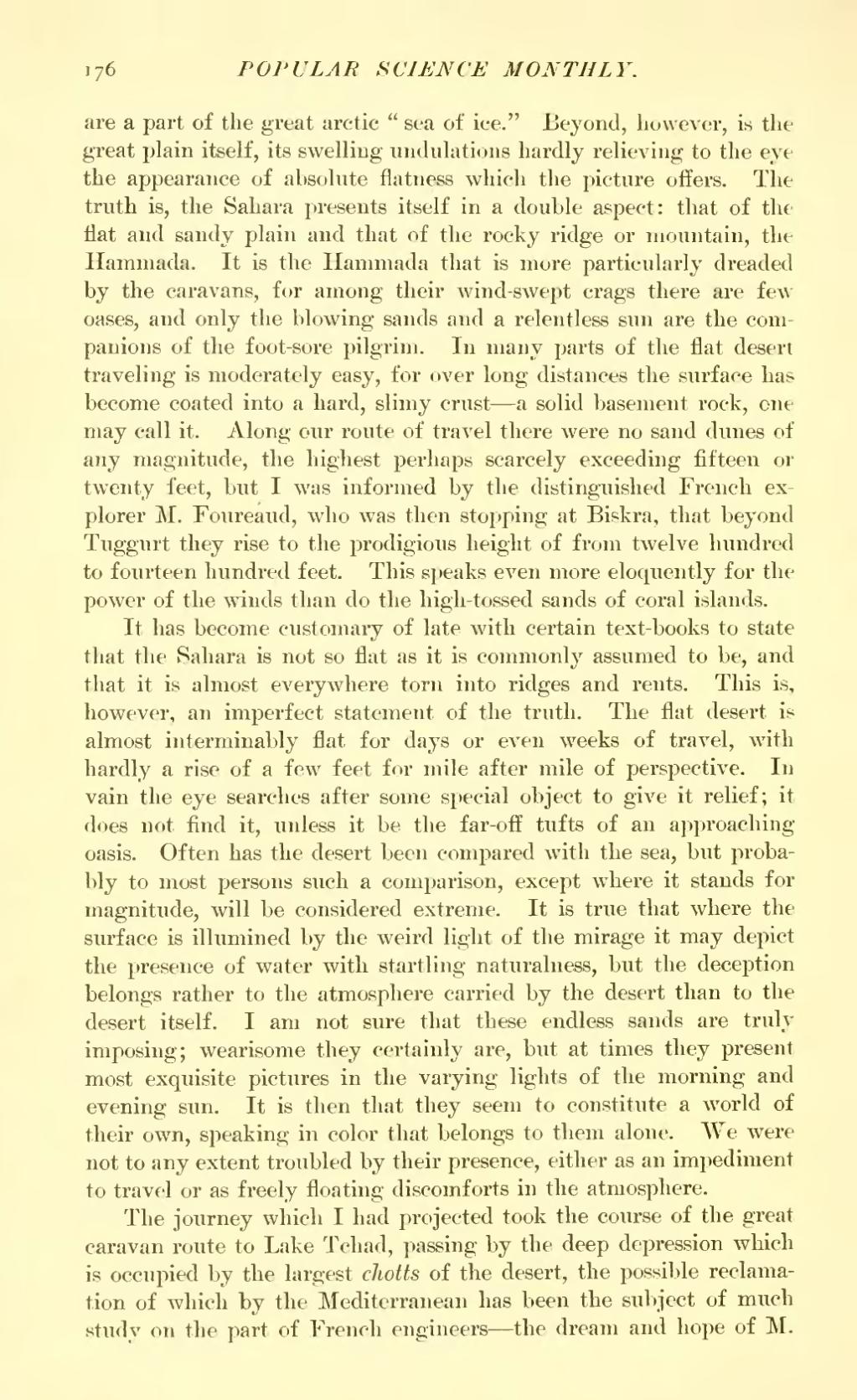are a part of the great arctic "sea of ice" Beyond, however, is the great plain itself, its swelling undulations hardly relieving to the eye the appearance of absolute flatness which the picture offers. The truth is, the Sahara presents itself in a double aspect: that of the flat and sandy plain and that of the rocky ridge or mountain, the Hammada. It is the Hammada that is more particularly dreaded by the caravans, for among their wind-swept crags there are few oases, and only the blowing sands and a relentless sun are the companions of the foot-sore pilgrim. In many parts of the flat desert traveling is moderately easy, for over long distances the surface has become coated into a hard, slimy crust—a solid basement rock, one may call it. Along our route of travel there were no sand dunes of any magnitude, the highest perhaps scarcely exceeding fifteen or twenty feet, but I was informed by the distinguished French explorer M. Foureaud, who was then stopping at Biskra, that beyond Tuggurt they rise to the prodigious height of from twelve hundred to fourteen hundred feet. This speaks even more eloquently for the power of the winds than do the high-tossed sands of coral islands.
It has become customary of late with certain text-books to state that the Sahara is not so flat as it is commonly assumed to be, and that it is almost everywhere torn into ridges and rents. This is, however, an imperfect statement of the truth. The flat desert is almost interminably flat for days or even weeks of travel, with hardly a rise of a few feet for mile after mile of perspective. In vain the eye searches after some special object to give it relief; it does not find it, unless it be the far-off tufts of an approaching oasis. Often has the desert been compared with the sea, but probably to most persons such a comparison, except where it stands for magnitude, will be considered extreme. It is true that where the surface is illumined by the weird light of the mirage it may depict the presence of water with startling naturalness, but the deception belongs rather to the atmosphere carried by the desert than to the desert itself. I am not sure that these endless sands are truly imposing; wearisome they certainly are, but at times they present most exquisite pictures in the varying lights of the morning and evening sun. It is then that they seem to constitute a world of their own, speaking in color that belongs to them alone. We were not to any extent troubled by their presence, either as an impediment to travel or as freely floating discomforts in the atmosphere.
The journey which I had projected took the course of the great caravan route to Lake Tchad, passing by the deep depression which is occupied by the largest chotts of the desert, the possible reclamation of which by the Mediterranean has been the subject of much study on the part of French engineers—the dream and hope of M.
